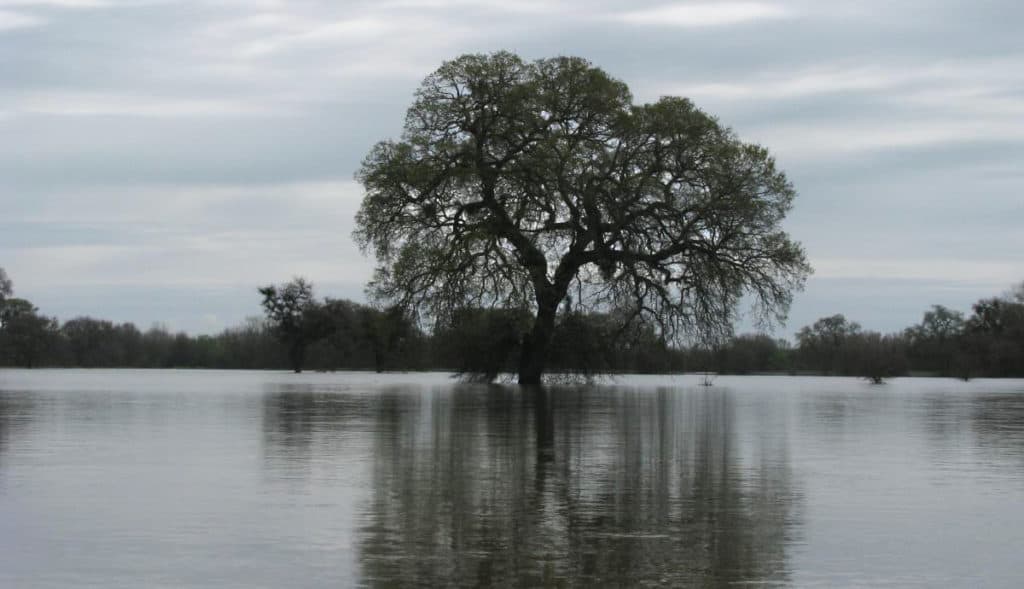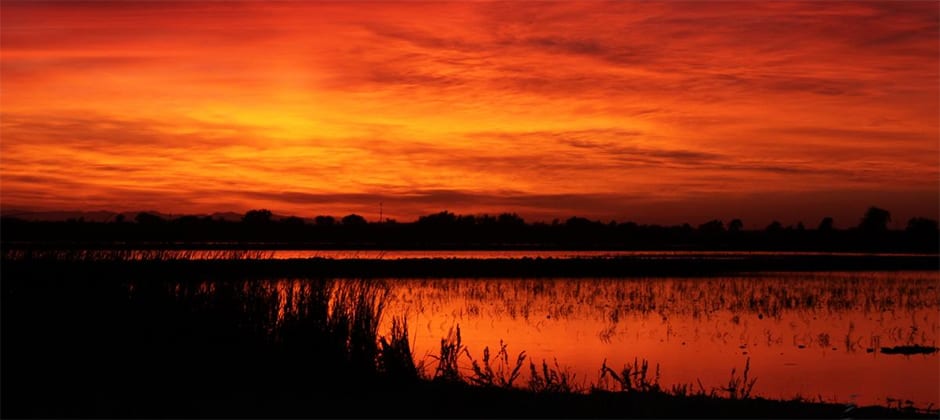Share this article
Unique partnership preserves unique California ecosystems
Before California’s Central Valley became known as an agricultural powerhouse, it contained one of the largest expanses of streamside forest and wetland habitat in North America. Vast forests of valley oaks covered the river systems and large expanses of freshwater wetlands covered the valley floor, which was an important stopover for migratory birds.
Much of that landscape has been transformed into farmland and urban areas, but at the Cosumnes River Preserve, a unique partnership of nonprofits and state, federal and local governments has conserved over 50,000 acres that provide resources for a variety of wildlife. The state-listed greater sandhill cranes (Grus canadensis tabida) are winter residents. Lesser sandhill cranes (G. c. canadensis) pass through on their migrations to and from northern Alaska.

Sandhill cranes are a frequent sight at Cosumnes River Preserve. ©Cosumnes River Preserve
“I think we have a pretty unique partnership,” said Preserve Manager Harry McQuillen. McQuillen is a U.S. Bureau of Land Management employee, but the preserve’s partners also include The Nature Conservancy, Ducks Unlimited, the California Department of Fish & Wildlife and Wildlife Conservation Board, the Sacramento County Department of Regional Parks, the California State Lands Commission, and the California Department of Water Resources. “We have all these organizations working together for a common cause.”
The effort began in the mid-1980s by The Nature Conservancy to preserve a surviving forest of valley oaks. Since then, the partnership has grown, stitching together more than 60 properties along the Cosumnes River, which winds through the Central Valley from its headwaters in the Sierra Nevada. About half the parcels are owned by the partners. The other half are owned by private landowners but are held in conservation easements that preserve the landscapes from development.
“They say that there has been more than a 90 percent loss of wetlands in California since the early 1800s,” McQuillen said. As the state’s population grew, lands were farmed and ranched. Forests were cleared. Rivers were diked. Wetlands were drained. Rivers that used to flow out and onto their floodplains during the rainy season were confined to their channels, and the millions of wetlands they once created were converted to farmland and cities and towns.
“This is the heart of the Pacific Flyway,” McQuillen said. “We have birds migrating to us from as far away as the Yukon Delta. These birds are flying 3,000 miles to reach the Central Valley in the winter, but there’s just a small postage stamp-size natural or semi-natural habitat available for them now. These birds are basically bouncing from one refuge area to another as they travel the length of the state.”

The Cosumnes River Preserve protects riparian oak forests, vernal pools and freshwater wetlands.
©Cosumnes River Preserve
The Cosumnes River Preserve seeks to protect three ecosystem types. Vernal pools occur nowhere else in California, but the shallow ponds that form over the hardpan soil within grasslands hold water for several months, creating habitat for species such as the California tiger salamander (Ambystoma californiense), federally listed as threatened in the area and endangered in others. Freshwater wetlands host the giant garter snake (Thamnophis gigas), both state and federally listed as threatened. The riparian oak forests that are protected by the preserve are some of the largest in the state.
When the preserve was begun, partnerships like this one were rare. Since then, the Cosumnes River Preserve has served as something of a model for how a variety of organizations can work together for a shared purpose.
The goal, McQuillen said, “is not just to protect, but to restore and enhance” the ecosystems, and to provide management into the future.
“We will be here forever and ever and ever unless Mother Nature decides to kick us off the planet,” he said. “We will always be here to protect these lands.”
The Bureau of Land Management is a Premier Partner of The Wildlife Society.
Header Image: The Cosumnes River Preserve has protected over 50,000 acres in California’s Central Valley for an abundance of wildlife. ©Cosumnes River Preserve








